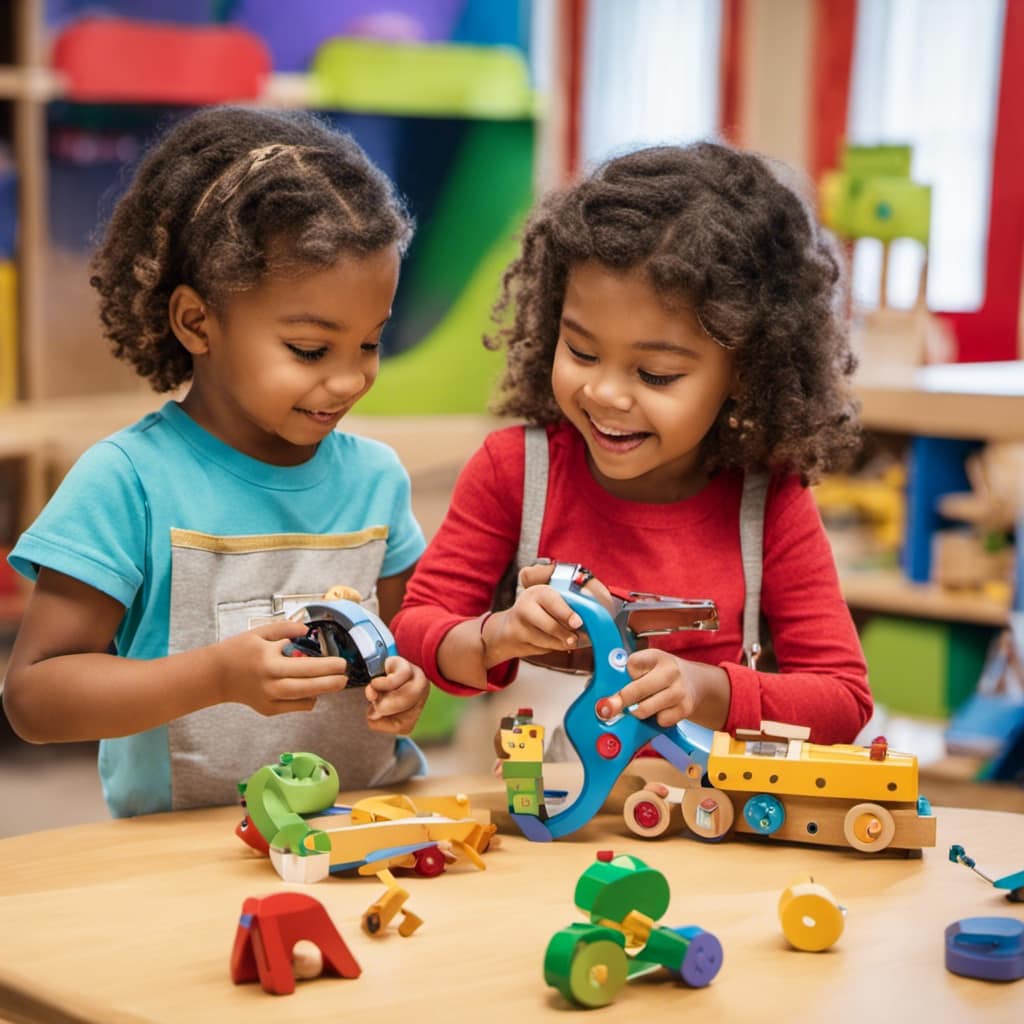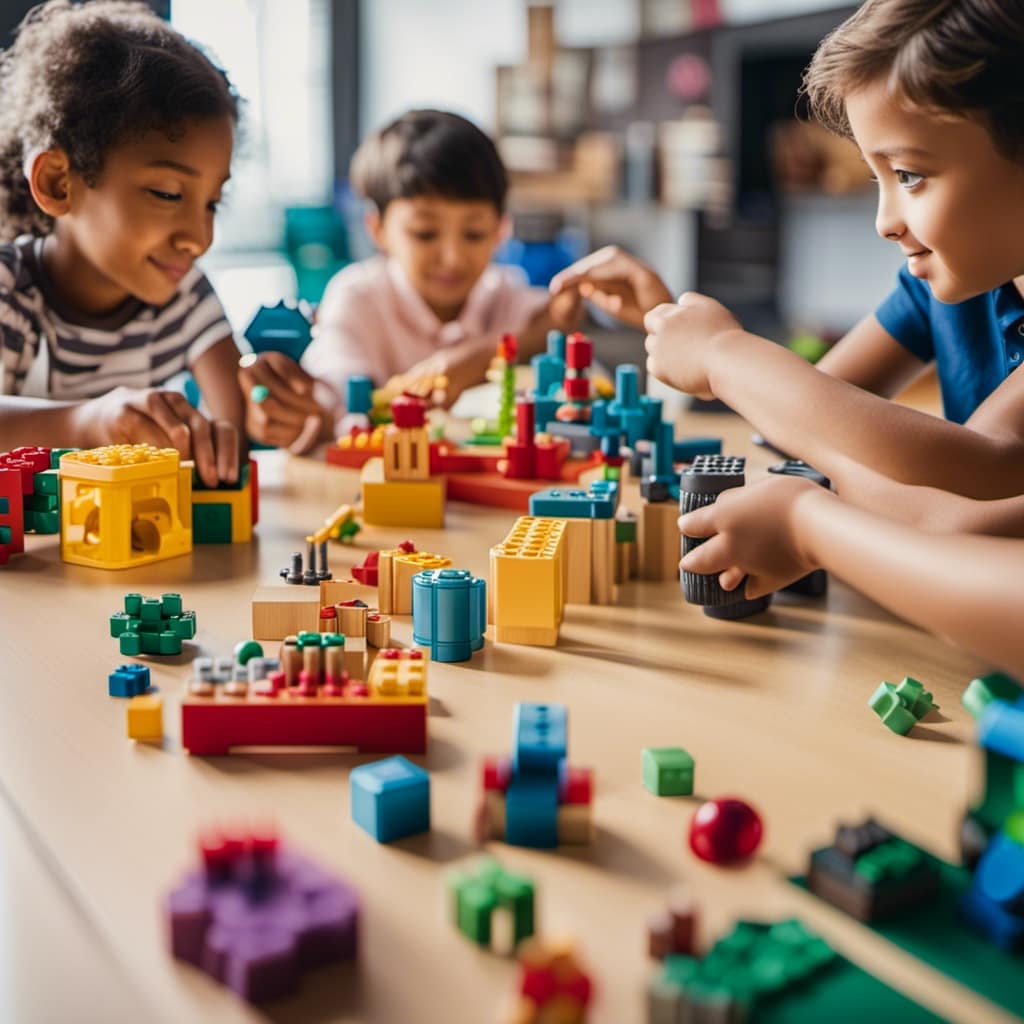Engaging preschoolers with fun science experiments sparks their curiosity and builds a foundation for lifelong learning. Activities like mixing baking soda and vinegar showcase chemical reactions, while creating rainbows in jars teaches about density. Simple water experiments help kids understand buoyancy and physical properties. Sensory play makes these concepts more tangible and enjoyable. Keep exploring these kinds of activities to see how they foster critical thinking and discovery skills in young learners.
Key Takeaways
- Engaging experiments like baking soda and vinegar foster curiosity while demonstrating chemical reactions visually and tactilely.
- Creating rainbows in jars showcases density differences, helping preschoolers understand layering and liquid properties.
- Water buoyancy tests promote hands-on learning about sinking and floating, reinforcing concepts of physical properties.
- Sensory play enhances science understanding by involving sight, touch, and sound, making abstract ideas more concrete.
- Fun activities encourage exploration, critical thinking, and early scientific skills through multisensory, age-appropriate experiments.

Introducing fun science experiments for preschoolers is a great way to spark curiosity and encourage early learning. When you engage young children with hands-on activities, you’re helping them explore the world around them in a meaningful way. These experiments aren’t just entertaining—they’re foundational for developing critical thinking, observation skills, and a love of discovery. Sensory play plays a essential role here, as it allows preschoolers to learn through their senses, making abstract scientific concepts more tangible and accessible.
Imagine setting up a simple experiment like mixing baking soda and vinegar. As you watch the fizzing reaction, your preschooler experiences a mini volcano, which sparks their interest and curiosity. This hands-on activity encourages them to observe changes, ask questions, and understand chemical reactions in a playful setting. Sensory play makes the experience even richer—your child can feel the bubbling foam, see the fizzy eruption, and hear the fizzing sound. These multisensory interactions deepen their understanding and make science feel like an adventure.
Mix baking soda and vinegar for a fizzy, mini volcano that sparks curiosity and hands-on learning.
Another fun activity is creating a rainbow in a jar. Using water dyed with food coloring, you can layer different colors to demonstrate density. Your little one will love pouring each layer carefully, watching the colors stay separate. This hands-on activity introduces concepts like density and layering while engaging their senses of sight and touch. As they pour, they develop fine motor skills, and as they observe the distinct layers, their curiosity about how things work grows. Sensory play in this context involves feeling the different textures of the liquids and noticing how they behave when poured.
Similarly, you can explore water science with simple experiments like floating and sinking. Gather various household objects and let your preschooler test which items float or sink. As they drop each object into water, they learn about buoyancy through direct experience. This kind of sensory play makes the lesson more memorable—your child can feel the weight and texture of objects, see the immediate results, and think critically about why some float while others sink. These activities foster an early understanding of scientific principles while encouraging exploration through touch and visual observation.
Frequently Asked Questions
How Can I Ensure Safety During Preschool Science Experiments?
To guarantee safety during preschool science experiments, you should implement safety precautions like wearing protective gear and keeping hazardous materials out of reach. Always supervise children actively, using supervision strategies such as close monitoring and clear instructions. Make sure the workspace is organized and free of clutter. Explain safety rules clearly and encourage kids to ask questions. By staying vigilant and prepared, you create a safe and fun learning environment for your preschoolers.
What Are Some Easy Science Experiments for Non-English Speaking Preschoolers?
Imagine a colorful rainbow of experiments that don’t rely heavily on words—like mixing baking soda and vinegar or exploring water’s surface tension. You should incorporate cultural adaptations and language support, making instructions visual or using gestures. Simple, hands-on activities help non-English speaking preschoolers grasp concepts easily. These experiments foster curiosity and understanding, letting kids explore science confidently without language barriers, turning learning into a fun, inclusive adventure.
How Do I Adapt Experiments for Children With Sensory Sensitivities?
When adapting experiments for children with sensory sensitivities, you should incorporate sensory-friendly modifications, like using soft lighting, calming textures, or noise-canceling headphones. Apply adaptive teaching techniques by offering alternative materials and allowing breaks when needed. This approach helps children feel comfortable and engaged, ensuring they can explore science safely and enjoyably. Your goal is to create a supportive environment where every child can participate and learn at their own pace.
Are There Age-Appropriate Science Kits for Preschoolers?
Think of science kits as treasure chests full of discovery for your preschooler. Yes, there are age-appropriate science kits designed specifically for little hands, making exploration safe and fun. Always check for safety precautions, including non-toxic materials and easy-to-understand instructions. These kits spark curiosity while keeping safety in mind, encouraging your child to learn through hands-on activities tailored for their age and developmental stage.
How Can I Incorporate Science Experiments Into Daily Routines?
You can incorporate science integration into daily routines by turning everyday activities into learning moments. For example, during meal prep, ask your preschooler to observe how ingredients change when cooked or mixed. While watering plants, discuss plant growth and life cycles. Use bath time to explore bubbles and surface tension. These simple, engaging science experiences help your child see science as a natural part of their daily routines, fostering curiosity and learning.
Conclusion
By trying simple science experiments, you spark your preschooler’s curiosity and love for learning. For example, imagine a child who’s fascinated by colorful reactions, like mixing baking soda and vinegar to create fizz. These hands-on activities build their confidence and understanding of the world around them. Keep exploring together—each experiment is a fun adventure that lays the foundation for future scientific discovery and critical thinking skills. Your encouragement makes learning exciting and memorable!











